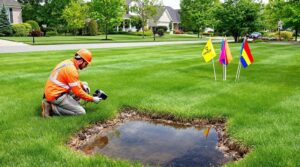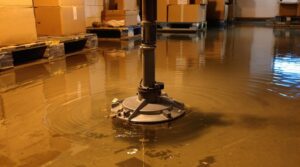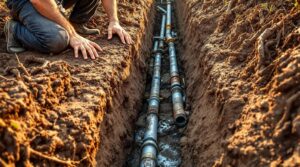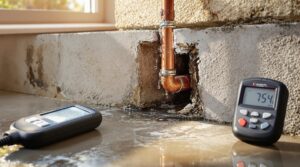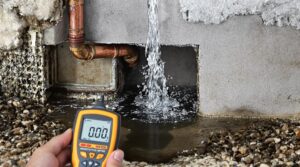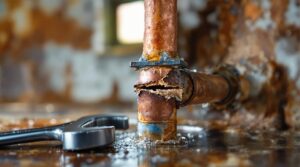The cost to replace drain pipes in a house ranges from $1,500 to $15,000, with most homeowners spending between $4,000 and $6,000 for complete system replacement. Material costs vary greatly, from $3 to $30 per linear foot installed, depending on pipe type selection (PVC, ABS, cast iron, or copper). Installation methods, accessibility, home size, and local building codes impact final pricing. Consulting a public adjuster can potentially increase insurance claim settlements by up to 800%. When considering the cost of basement drain pipe replacement, homeowners should also factor in potential disruptions to their property. It’s essential to obtain multiple quotes from licensed contractors to ensure competitive pricing and quality workmanship. Additionally, understanding your insurance policy can help determine if any of these costs are covered, alleviating some of the financial burdens associated with such a significant home repair.
Key Takeaways
- Average costs range from $3-30 per linear foot depending on pipe material, with PVC being cheapest and cast iron most expensive.
- Total house drain pipe replacement typically costs $50-250 per foot when including labor, excavation, and restoration work.
- Factors affecting cost include pipe accessibility, home size, local labor rates, required permits, and chosen installation method.
- Trenchless methods like pipe bursting ($60-200/foot) or relining ($80-250/foot) can reduce overall costs by minimizing property disruption.
- Homeowners can save money by obtaining multiple quotes, scheduling during off-peak seasons, and selecting cost-effective materials.
Average Cost Ranges for Different Pipe Materials
When selecting drain pipe materials, homeowners typically face several cost tiers depending on their chosen material.
Pipe material comparisons reveal PVC as the most economical option, ranging from $3 to $8 per linear foot installed. ABS plastic offers similar durability at $4 to $12 per linear foot, while cast iron commands premium prices of $10 to $30 per linear foot installed.
Installation costs vary greatly based on material weight and handling requirements. PVC and ABS systems require minimal specialized tools and can be installed quickly, contributing to lower labor expenses. Cast iron, while extremely durable, demands additional equipment and expertise, increasing overall project costs.
Copper drain pipes, though less common, fall into the mid-range category at $8 to $20 per linear foot installed.
Each material presents distinct advantages regarding longevity, chemical resistance, and noise reduction, factors that ultimately influence the total replacement investment.
Factors That Impact Drain Pipe Replacement Costs
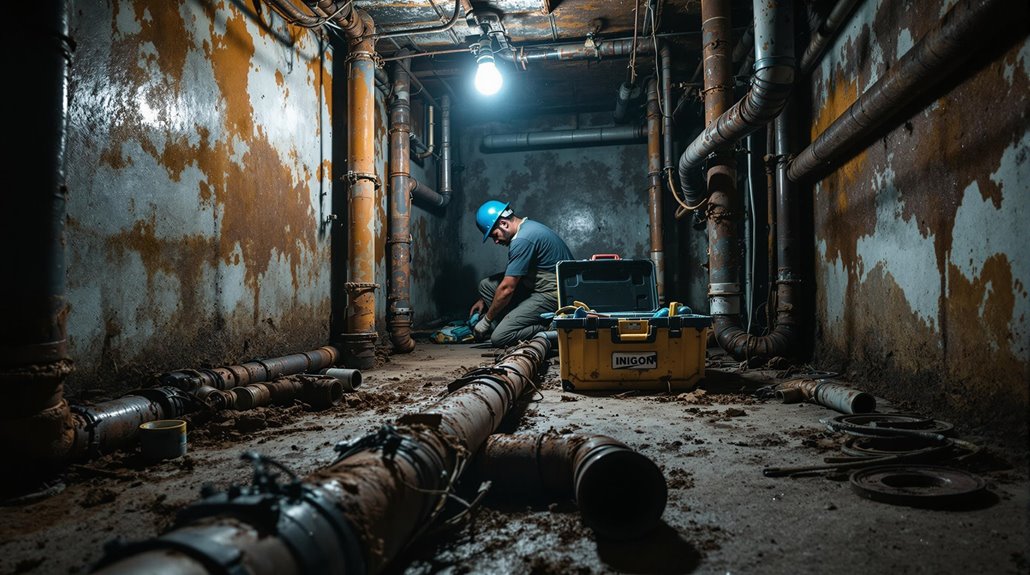
Several key factors greatly influence the total cost of drain pipe replacement projects. The location and accessibility of the existing drainage system markedly impacts labor costs, with pipes buried under concrete or located in challenging areas requiring more extensive work.
The extent of damage and whether repairs can address specific sections versus complete replacement also affects overall expenses.
The size of the home and complexity of the plumbing layout directly correlate to material quantities needed. Local building codes and permit requirements can add substantial costs, particularly in urban areas.
The chosen pipe material affects both immediate costs and pipe longevity, with higher-quality materials commanding premium prices but potentially offering better long-term value.
Labor rates vary by region and contractor expertise, while the timing of the project can influence pricing due to seasonal demand.
Additional factors include soil conditions, necessary landscaping restoration, and whether asbestos remediation is required in older homes.
Signs Your Home Needs Drain Pipe Replacement

Homeowners can identify potential drain pipe failure through multiple warning signals. Regular monitoring of plumbing systems can reveal telltale signs of pipe deterioration before major problems develop. Common indicators include slow draining sinks, recurring clogs, and gurgling sounds from drains or toilets.
Several visible signs may indicate serious drain issues requiring immediate attention. Water stains on walls or ceilings, foundation cracks, and unexplained wet spots in the yard often signal underground pipe damage. Foul odors emanating from drains, backed-up sewage, or multiple fixtures experiencing simultaneous drainage problems typically indicate system-wide failures.
Additional warning signs include frequent drain blockages that persist despite routine cleaning, visible rust or corrosion around pipe connections, and sudden increases in water bills.
The presence of mold, mildew, or unusual plant growth along sewer line paths may also indicate leaking or broken drain pipes requiring replacement.
Common Installation Methods and Their Price Points
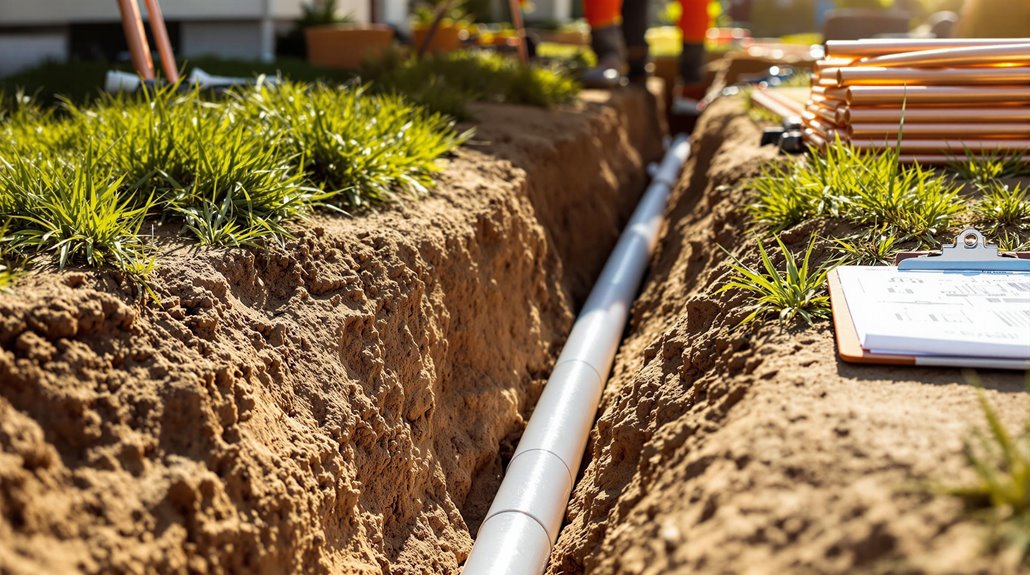
Different drain pipe installation methods carry varying costs based on the approach and materials selected.
Common installation techniques include traditional trenching, pipe bursting, and pipe relining. Traditional trenching, while labor-intensive, typically costs $50-$250 per foot depending on depth and accessibility.
Pipe bursting, which breaks existing pipes while simultaneously installing new ones, ranges from $60-$200 per foot.
Pipe relining, also known as cured-in-place piping (CIPP), offers a less invasive solution, costing $80-$250 per foot. This method involves inserting a resin-coated liner into existing pipes.
Cost comparisons reveal that while traditional trenching often has lower material costs, the extensive labor and restoration expenses can make it more expensive overall.
Trenchless methods like pipe bursting and relining generally have higher material costs but minimize property disruption and secondary repairs, potentially resulting in lower total project costs.
Ways to Save Money on Drain Pipe Replacement
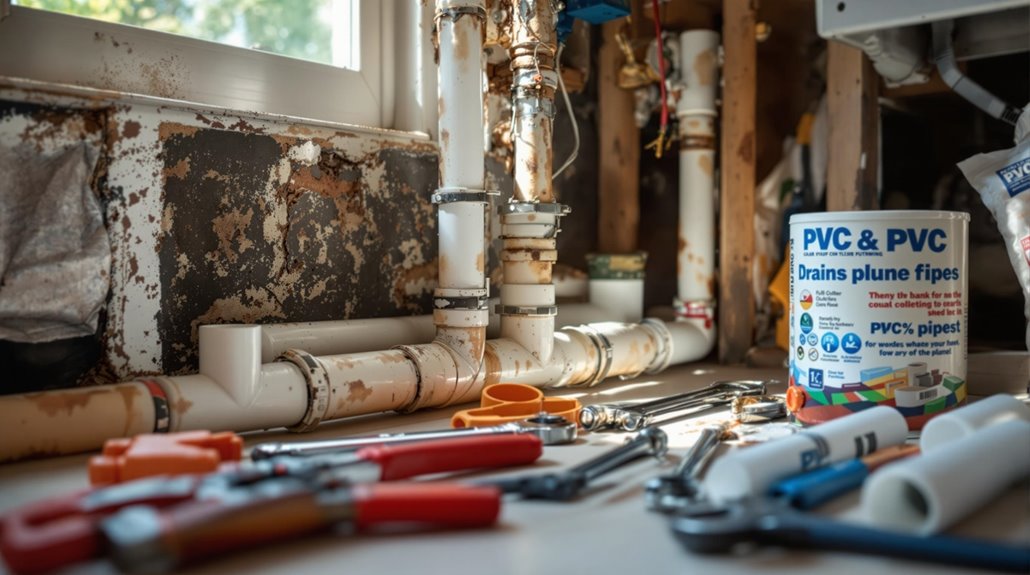
Five key strategies can help reduce the overall cost of drain pipe replacement projects.
First, homeowners can handle minor DIY projects like removing old fixtures and clearing the workspace before professionals arrive.
Second, obtaining multiple contractor quotes enables comparison shopping and negotiation leverage.
Third, proper budget planning allows for material purchases during seasonal sales and promotions.
Fourth, selecting alternative pipe materials that meet code requirements while offering cost savings can greatly reduce expenses. PVC or ABS pipes typically cost less than copper or cast iron alternatives.
Fifth, scheduling work during off-peak seasons when contractors have fewer projects often results in better pricing. Additionally, bundling multiple plumbing repairs into one service call can reduce overall labor costs.
For larger projects, some contractors offer payment plans or financing options to help manage expenses while ensuring quality work is completed according to specifications and local building codes.
The Benefits Of Consulting A Public Adjuster

When dealing with costly drain pipe replacements, consulting a public adjuster can provide significant advantages through their specialized knowledge of insurance policies and claims procedures.
Public adjusters offer objective damage assessments and thorough documentation, streamlining the claims process while ensuring all damage-related costs are properly identified and included.
Studies indicate that policyholders who engage public adjusters typically receive substantially higher settlement amounts, with potential increases of up to 800% compared to those who handle claims independently.
Expertise In Insurance Claims
Steering through insurance claims for drain pipe replacement can be considerably more successful with the expertise of a public adjuster. These licensed professionals possess specialized knowledge in managing complex insurance coverage scenarios and handling the claims process effectively.
| Adjuster Expertise | Impact on Claims |
|---|---|
| Damage Assessment | Thorough documentation of pipe damage |
| Policy Analysis | Identification of coverage elements |
| Cost Evaluation | Accurate estimation of replacement costs |
| Settlement Strategy | Maximized compensation outcomes |
Studies indicate that policyholders utilizing public adjusters receive settlements up to 800% higher than those who handle claims independently. Their extensive understanding of policy language, coupled with negotiation skills, guarantees proper valuation of drain pipe damage and associated repairs while maintaining compliance with insurance requirements.
Objective Damage Assessment
Professional damage assessment serves as a cornerstone of successful insurance claims for drain pipe replacement.
Public adjusters conduct extensive damage evaluations that document the full extent of drain pipe deterioration, utilizing detailed photography and technical reports to support claims. Their objective assessment guarantees all damage aspects are properly identified and quantified.
This independent evaluation proves particularly valuable when dealing with complex drain pipe issues that may involve multiple affected areas or hidden damage.
Public adjusters' thorough documentation methods and systematic approach to damage assessment help establish a strong foundation for claim negotiations. Their expertise in identifying both obvious and subtle forms of pipe damage often reveals additional covered losses that homeowners or insurance company adjusters might overlook, potentially leading to noticeably higher settlement amounts.
Streamlined Claim Process
Consulting a public adjuster streamlines the drain pipe replacement claims process while maximizing potential settlements.
These licensed professionals manage all aspects of documentation, evaluation, and negotiation with insurance companies, potentially increasing settlement amounts by up to 800% compared to unrepresented claims.
The adjuster's systematic approach guarantees streamlined documentation of pipe damage through detailed inspections, photographic evidence, and thorough reports.
Their expertise in policy interpretation and claims preparation facilitates efficient negotiations with insurers, greatly reducing processing time and procedural delays.
By engaging a public adjuster early, property owners benefit from professional advocacy throughout the entire claims process, with fees typically ranging from 10% to 20% of the final settlement.
This investment often proves valuable, particularly in complex drain pipe replacement scenarios requiring specialized knowledge.
Higher Claim Payouts & Settlements
When property owners engage public adjusters for drain pipe replacement claims, they typically secure considerably higher settlements compared to self-managed claims.
Studies indicate settlements can increase up to 800% with professional representation. Public adjusters achieve these results through thorough claim documentation and expert settlement negotiation techniques.
- Thorough damage assessment capturing all impacted areas, including hidden structural issues and secondary damage
- Strategic presentation of evidence strengthening the policyholder's position during negotiations
- Professional interpretation of policy language to maximize coverage benefits
- Expert valuation of replacement costs accounting for current market rates and materials
This systematic approach guarantees insurance companies fully acknowledge the extent of damage and associated costs, leading to substantially higher claim payouts.
The adjuster's expertise particularly benefits complex drain pipe claims involving multiple damage points or disputes over coverage scope.
About The Public Claims Adjusters Network (PCAN)
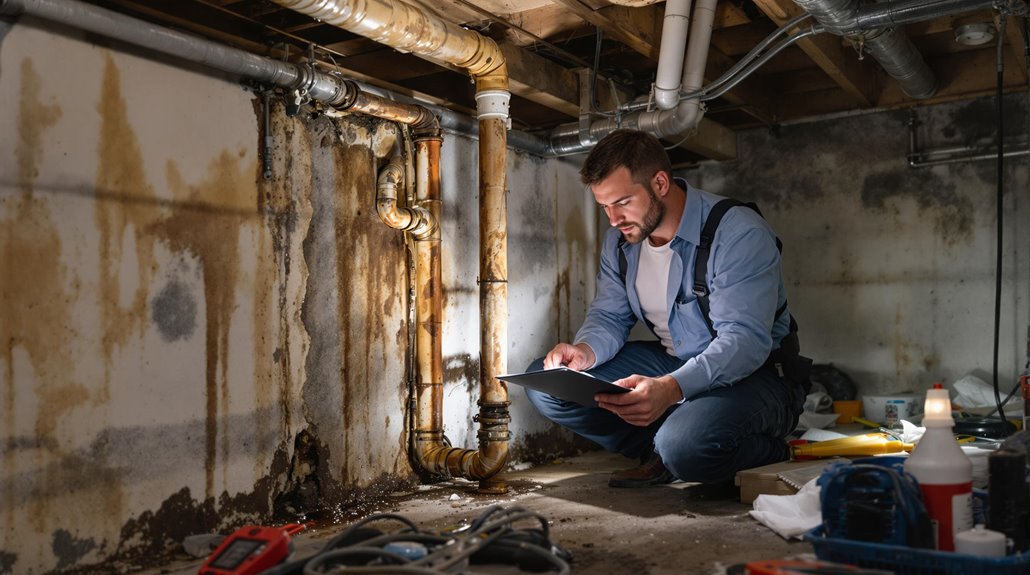
The Public Claims Adjusters Network (PCAN) operates as a nationwide alliance of state-licensed public adjusters who specialize in property damage insurance claims for both residential and commercial properties.
With coverage spanning 40+ states and expertise in over 30 claim types, PCAN's member adjusters must complete a rigorous application and interview process to demonstrate their qualifications.
PCAN benefits include access to pre-vetted adjusters who maintain the highest professional standards.
Each member undergoes annual audits of their licenses and complaint records to verify continued compliance with PCAN's strict requirements.
Adjuster credentials are thoroughly verified before admission to the network, establishing a reliable resource for policyholders seeking expert representation.
The organization serves as a connecting bridge between qualified public adjusters and property owners requiring assistance with insurance claims.
This systematic approach guarantees that policyholders can confidently engage with experienced professionals who have demonstrated exceptional expertise in their field.
Frequently Asked Questions
How Long Does a Typical Drain Pipe Replacement Project Take to Complete?
Project timelines for drain pipe replacement typically range from 2-5 days, depending on installation efficiency, system complexity, property size, and accessibility of existing plumbing infrastructure for removal and replacement.
Will My Homeowner's Insurance Cover Drain Pipe Replacement Costs?
Standard homeowner's insurance policies typically exclude normal pipe deterioration but may cover sudden damage. Insurance claims for drain pipes require specific coverage limits and documentation of unexpected failures.
Can I Live in My House During Drain Pipe Replacement Work?
While the rumble of construction echoes through halls, homeowners typically can remain during drain pipe replacement, though temporary accommodations may be necessary depending on work scope and bathroom accessibility.
What Permits Are Required for Replacing Residential Drain Pipes?
Plumbing permits are generally required for drain pipe replacement, with specific permit types varying by local regulations. Building permits may also be necessary when structural modifications are involved.
How Often Should Drain Pipes Be Replaced in an Average Home?
Residential drain pipes typically require replacement every 50-100 years depending on material type. Regular drain maintenance can extend pipe lifespan, though cast iron systems may need attention after 50 years.

